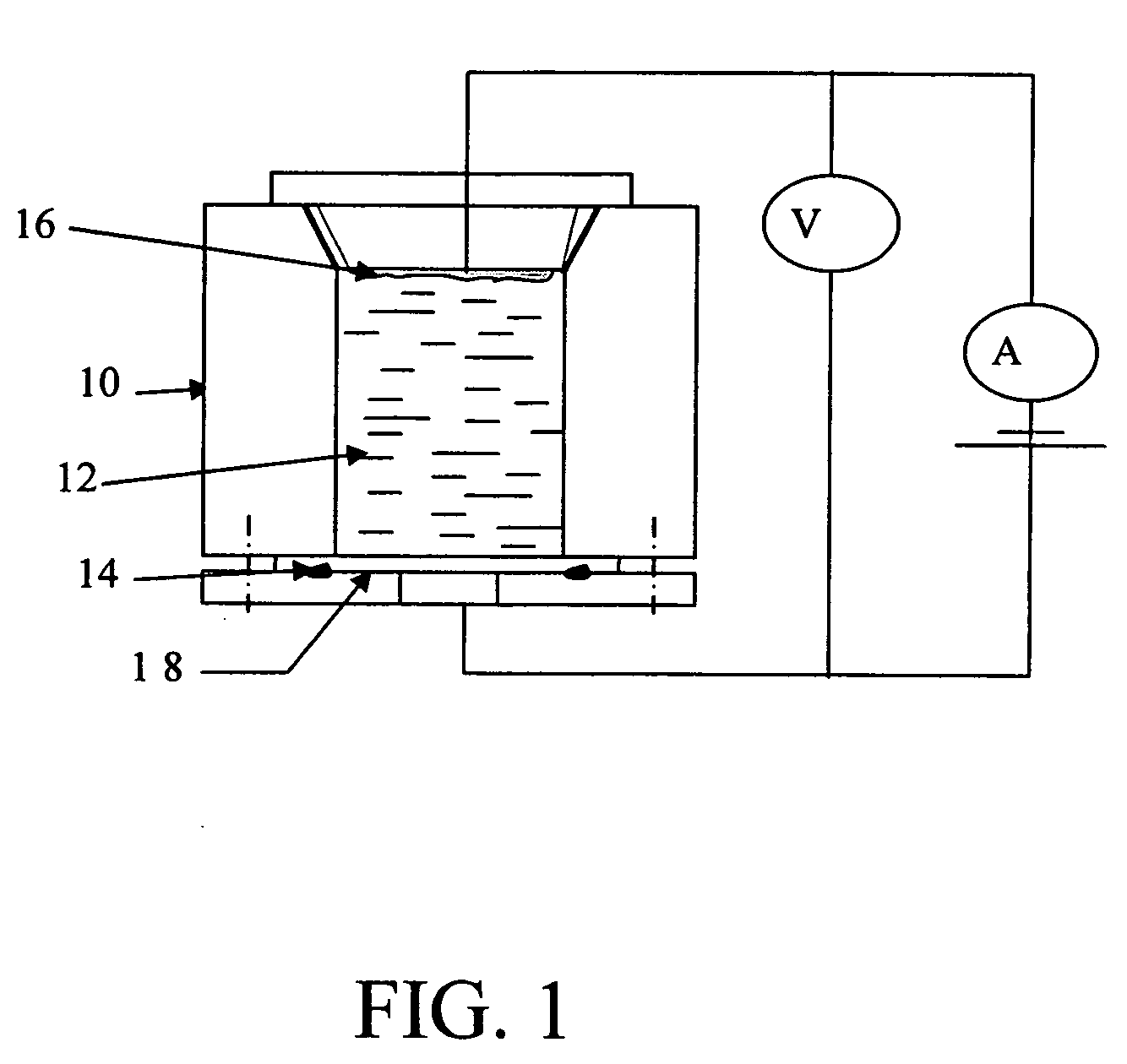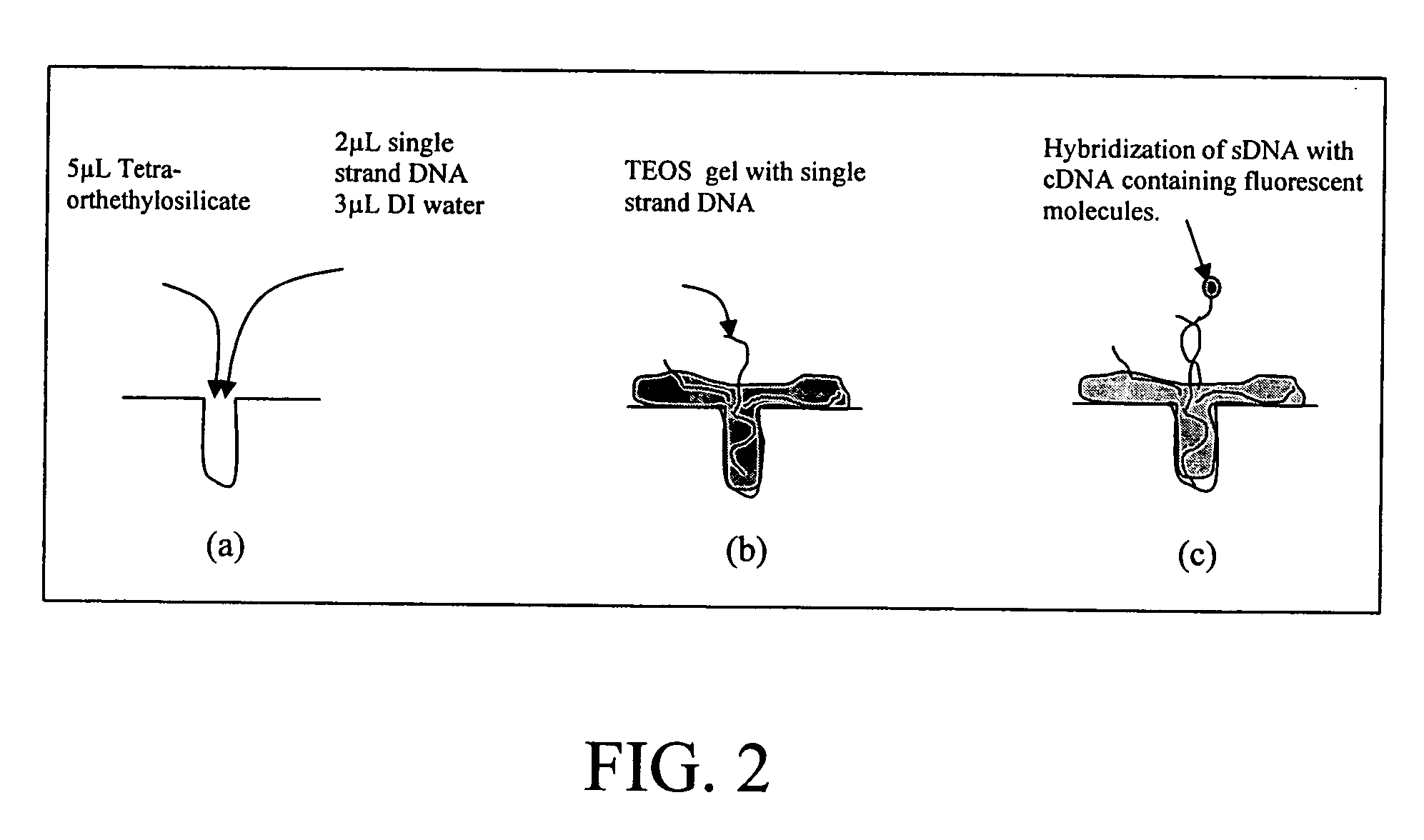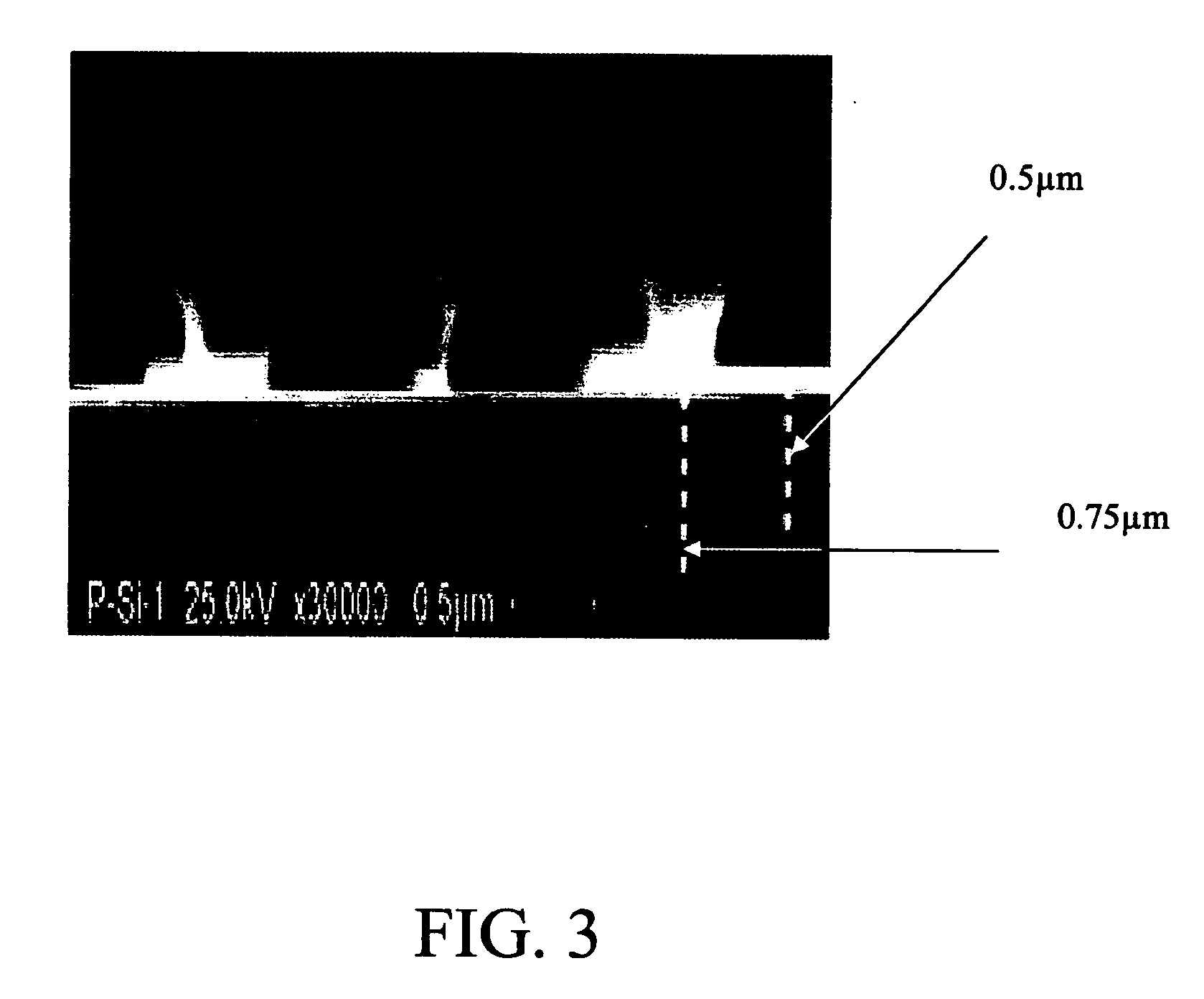DNA biochip and methods of use
a biochip and dna technology, applied in the field of dna biochip and methods of use, can solve the problems of immunological assays, children with weaker immune systems are at greater risk, and the success of analysis is extremely difficul
- Summary
- Abstract
- Description
- Claims
- Application Information
AI Technical Summary
Benefits of technology
Problems solved by technology
Method used
Image
Examples
example 1
Preparation of Porous Silicon Wafer with Immobilized DNA
[0052] Porous silicon provides numerous sites for nucleic acid sequence to attach. The porous layer of silicon was fabricated by means of the electrochemical etching in HF solution. FIGS. 4A-4C show the surface of porous silicon after etching. In this case, only a small quantity of charge was generated to generate the pores over the silicon wafer surface. Single strand DNA (sDNA) (SEQ ID NO: 1) of RSV virus was immobilized on PS. A fluorescent probe molecule was attached to a cDNA (SEQ ID NO: 2) having a sequence complementary to the sequence in SEQ ID NO: 1 and then brought into contact with the PS having the sDNA immobilized thereon under conditions sufficient for hybridization of the cDNA to the immobilized sDNA. The fluorescent molecule on the cDNA provides the means of detecting the extent of hybridization of the cDNA to the sDNA.
example 2
SEM Characterization of Microcavities on Silicon Wafer
[0053] A cross-section SEM picture of a porous silicon microcavity is shown in FIG. 3. This picture was taken transversally to the silicon surface and illustrates hemispherical structures over the entire surface. These structures represent the beginning stage of porous silicon formation. Furthermore, pore depths varying between 0.5 and 0.75 μm are highlighted in the figure by white-dotted lines.
example 3
Optical Microscopy (EPI) Studies of DNA Biochip
[0054] Epi indicates incident illumination and has been used in the present invention. The reflection and refraction of light according to the multiple wavelet concepts, now known as the Huygens' principle. When the wavefront encounters the interface between the two media, a portion of the light is reflected and another part is refracted. The periodic rows of miniature semicircular red waves represent the Huygens wavelets that together compose the incident and reflected wave fronts. Wavelets that penetrate the media boundary to become refracted are portrayed in blue, as is the line passing through the center of the refracted beam that denotes their direction of propagation. According to the Huygens model of light, a small portion of each angled wavefront impacts the second medium before the rest of the front reaches the interface. This portion of the wavefront begins to move through the second medium while the rest of the wave is still...
PUM
| Property | Measurement | Unit |
|---|---|---|
| Tm | aaaaa | aaaaa |
| resistivity | aaaaa | aaaaa |
| resistivity | aaaaa | aaaaa |
Abstract
Description
Claims
Application Information
 Login to View More
Login to View More - R&D
- Intellectual Property
- Life Sciences
- Materials
- Tech Scout
- Unparalleled Data Quality
- Higher Quality Content
- 60% Fewer Hallucinations
Browse by: Latest US Patents, China's latest patents, Technical Efficacy Thesaurus, Application Domain, Technology Topic, Popular Technical Reports.
© 2025 PatSnap. All rights reserved.Legal|Privacy policy|Modern Slavery Act Transparency Statement|Sitemap|About US| Contact US: help@patsnap.com



